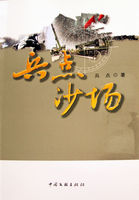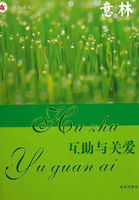The name has a certain air of being Norse. But the story of Scottish nomenclature is confounded by a continual process of translation and half-translation from the Gaelic which in olden days may have been sometimes reversed. Roy becomes Reid; Gow, Smith. A great Highland clan uses the name of Robertson; a sept in Appin that of Livingstone; Maclean in Glencoe answers to Johnstone at Lockerby. And we find such hybrids as Macalexander for Macallister. There is but one rule to be deduced: that however uncompromisingly Saxon a name may appear, you can never be sure it does not designate a Celt. My great-grandfather wrote the name STEVENSON but pronounced it STEENSON, after the fashion of the immortal minstrel in REDGAUNTLET; and this elision of a medial consonant appears a Gaelic process; and, curiously enough, I have come across no less than two Gaelic forms: JOHN MACSTOPHANE CORDINERIUS IN CROSSRAGUEL, 1573, and WILLIAM M'STEEN in Dunskeith (co. Ross), 1605. Stevenson, Steenson, Macstophane, M'Steen: which is the original? which the translation? Or were these separate creations of the patronymic, some English, some Gaelic? The curiously compact territory in which we find them seated - Ayr, Lanark, Peebles, Stirling, Perth, Fife, and the Lothians - would seem to forbid the supposition. (1)
(1) Though the districts here named are those in which the name of Stevenson is most common, it is in point of fact far more wide-spread than the text indicates, and occurs from Dumfries and Berwickshire to Aberdeen and Orkney.
'STEVENSON - or according to tradition of one of the proscribed of the clan MacGregor, who was born among the willows or in a hill-side sheep-pen - "Son of my love," a heraldic bar sinister, but history reveals a reason for the birth among the willows far other than the sinister aspect of the name': these are the dark words of Mr. Cosmo Innes; but history or tradition, being interrogated, tells a somewhat tangled tale. The heir of Macgregor of Glenorchy, murdered about 1858 by the Argyll Campbells, appears to have been the original 'Son of my love'; and his more loyal clansmen took the name to fight under. It may be supposed the story of their resistance became popular, and the name in some sort identified with the idea of opposition to the Campbells.
Twice afterwards, on some renewed aggression, in 1502 and 1552, we find the Macgregors again banding themselves into a sept of 'Sons of my love'; and when the great disaster fell on them in 1603, the whole original legend reappears, and we have the heir of Alaster of Glenstrae born 'among the willows' of a fugitive mother, and the more loyal clansmen again rallying under the name of Stevenson. A story would not be told so often unless it had some base in fact; nor (if there were no bond at all between the Red Macgregors and the Stevensons) would that extraneous and somewhat uncouth name be so much repeated in the legends of the Children of the Mist.
But I am enabled, by my very lively and obliging correspondent, Mr. George A. Macgregor Stevenson of New York, to give an actual instance. His grandfather, great-grandfather, great-great-grandfather, and great-great-great-grandfather, all used the names of Macgregor and Stevenson as occasion served; being perhaps Macgregor by night and Stevenson by day. The great-great-great-grandfather was a mighty man of his hands, marched with the clan in the 'Forty-five, and returned with SPOLIA OPIMA in the shape of a sword, which he had wrested from an officer in the retreat, and which is in the possession of my correspondent to this day. His great-grandson (the grandfather of my correspondent), being converted to Methodism by some wayside preacher, discarded in a moment his name, his old nature, and his political principles, and with the zeal of a proselyte sealed his adherence to the Protestant Succession by baptising his next son George. This George became the publisher and editor of the WESLEYAN TIMES. His children were brought up in ignorance of their Highland pedigree; and my correspondent was puzzled to overhear his father speak of him as a true Macgregor, and amazed to find, in rummaging about that peaceful and pious house, the sword of the Hanoverian officer. After he was grown up and was better informed of his descent, 'I frequently asked my father,' he writes, 'why he did not use the name of Macgregor; his replies were significant, and give a picture of the man: "It isn't a good METHODIST name. You can use it, but it will do you no GOOD." Yet the old gentleman, by way of pleasantry, used to announce himself to friends as "Colonel Macgregor." '
Here, then, are certain Macgregors habitually using the name of Stevenson, and at last, under the influence of Methodism, adopting it entirely. Doubtless a proscribed clan could not be particular; they took a name as a man takes an umbrella against a shower; as Rob Roy took Campbell, and his son took Drummond. But this case is different; Stevenson was not taken and left - it was consistently adhered to. It does not in the least follow that all Stevensons are of the clan Alpin; but it does follow that some may be. And I cannot conceal from myself the possibility that James Stevenson in Glasgow, my first authentic ancestor, may have had a Highland ALIAS upon his conscience and a claymore in his back parlour.
To one more tradition I may allude, that we are somehow descended from a French barber-surgeon who came to St. Andrews in the service of one of the Cardinal Beatons. No details were added. But the very name of France was so detested in my family for three generations, that I am tempted to suppose there may be something in it. (1)
(1) Mr. J. H. Stevenson is satisfied that these speculations as to a possible Norse, Highland, or French origin are vain. All we know about the engineer family is that it was sprung from a stock of Westland Whigs settled in the latter part of the seventeenth century in the parish of Neilston, as mentioned at the beginning of the next chapter.
It may be noted that the Ayrshire parish of Stevenston, the lands of which are said to have received the name in the twelfth century, lies within thirteen miles south-west of this place. The lands of Stevenson in Lanarkshire first mentioned in the next century, in the Ragman Roll, lie within twenty miles east.















